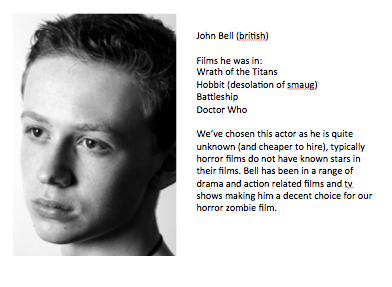Analyse Napoleon Dynamite Title Sequence and Create a Credit Timeline
Napoleon Dynamite Title Sequence
A title sequence is the first thing an audience will see when watching a film, it is essential that the title sequence gives a good impression to the audience so they will continue to watch the film.
Mise En Scene
The lighting throughout the sequence is very natural which suggests that the film is very realistic and conveys to the audience that the film is realistic and very natural, and could also suggest a comedic element.The sequence is set in a house (or so the audience assume), as the background shows fabrics and carpets and floor tiles usually found within the home; this portrays an idea of familiarity to the audience and makes the film seem natural and realistic as the audience would live in homes like these due to the era of which the film is set in. The background of each shot is usually very plain and simple, perhaps suggesting the character is this way too allowing the audience to relate to the character. The use of this plain background makes the titles more striking to the audience and to pay attention to each little detail. All of the objects used within the sequence are ones that the audience can familiarise themselves with and use within day-to-day life, this makes the audiences feel more relaxed and allows them to relate to the character and the film more. Most of the shots show strange food combinations which makes the audience stereotype the character to a teenage boy, as the audience typically associate weird food combinations with teenage boys. The food combinations could also suggest to the audience that the character himself is weird. There are a few shots of Alien related objects such as the UFO Abduction Insurance card and the books show that the character could be stereotyped as a 'geek', as 'geeks' are stereotyped to be liking UFO and space related things. UFO sightings and expereinces typically happen in rural areas, so this could portray the idea of the character living in a rural area. The UFO related items could also suggest that the film is a spoof of a sci-fi film. The school stationary shot and the student card shot, tells the audience that the character is a a student at a school which allows the audience to relate to the character as audience memebers will have been to a school. The character seems to be organised as the character's hands and fingernails are clean, his wallet is organised, the toy cars are labelled, the character uses chapstick and could possibly be concious of his health as fruit and vegetables are shown within the food shots and the lemon sweet packet says fat free on the box; each of these parts combined stereotypically represent a nerdy teenage boy, which allows the audience to guess what the character's personality is like.
Cinematography
The use of close ups within the whole sequence show the detail of each shot and make it easy to read. This shot is very straightforward and shows the audience that whatever you see within the title sequence there will be no hidden meaning and portrays to the audience that the character is very down to earth and what you see is what you get. The use of these close ups could perhaps create intimacy between the character and audience as it shows that the character trusts the audience and hasn't really ever showed anyone what he really likes, what he eats and his drawings. There is no camera movement in the title sequence whihc could perhaps represent that the character's life is stable and also not really going anywhere. The title sequence is from a slight high angle, this could represent the social hierarchy within schools and that the audience members are higher than him and look down on the character.
Editing
The jump cuts are used to show that there is no routine within the character's life. The pace of the shots and the title sequence is very slow, which could show that there isn't a lot going on in the character's life and everything drags within his digesis.
Sound
At the start of the sequence the audience hear diegetic bird tweets which could suggest again that the character lives in a rural area as there are no sirens or traffic. The soundtrack is non-diegetic and is empathetic sound. The music has lyrics relating to school re-enforcing the idea of the character being a student. Each time a plate is put down, the sound is either emphasised or echoes which portrays the idea of the character being alone and isolated, which could suggest that his parents aren't around, the character has minimal friends and lives in a rural area.
Napoleon Dynamite Credit Timeline
0:00:00 - Start title sequence0:00:03 - Fox Searchlight Pictures
0:00:09 - Paramount Pictures (presents)
0:00:19 - (in association with) MTV Films
0:00:26 - (starring) Jon Heder
0:00:32 - (as) Napoleon Dynamite (title)
0:00:39 - Jon Gries
0:00:50 - Aaron Ruell
0:00:57 - Efren Ramirez
0:01:04 - Tina Majorino
0:01:12 - Diedrich Bader
0:01:23 - (casting by) Jory Weitz
0:01:31 - (music by) John Swihart
0:01:39 - (edited by) Jeremy Coon
0:01:49 - (Production design) Cory Lorenzen
0:01:55 - (DOP) Munn Powell
0:02:05 - (executive producer) Jory Weitz
0:02:13 - (produced by) Jeremy Coon, Chris Wyatt, Sean Covel
0:02:26 - (written by) Jared Hess, Jerusha Hess
0:02:33 - (directed by) Jared Hess
0:02:41 - End of sequence





































